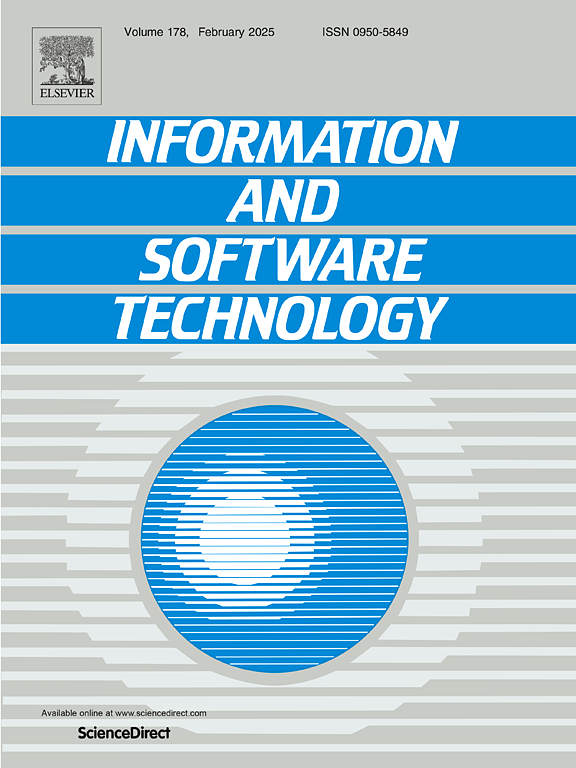Improving seed quality with historical fuzzing results
IF 3.8
2区 计算机科学
Q2 COMPUTER SCIENCE, INFORMATION SYSTEMS
引用次数: 0
Abstract
Context:
Coverage-guided fuzzing (CGF) has achieved great success in discovering software vulnerabilities. The efficiency of CGF highly relies on the quality of the initial seed corpus. Although there have been some works in recent years investigating the initial seed selection, usually only the corpus given by developers or downloaded from the Internet is used to get the initial seed corpus.
Objective:
We assess several existing corpus minimization tools and find that none of them effectively leverage information contained in historical fuzzing results. The historical fuzzing results may come from previous fuzz testing or the emerging continuous fuzzing integration in the software development cycle. Therefore, we want to utilize history fuzzing results to generate a high-quality initial corpus to enhance the fuzzing performance. Besides, the size of the initial corpus will affect the fuzzing efficiency, so using a minimization tool to extract valuable seeds from historical results is essential.
Method:
We propose to use historical fuzzing results to help construct the initial seed corpus and further develop a corpus minimization tool named MCM (multiple corpora minimization), which can analyze multiple fuzzing results and use information including edge appearance frequency to help seed selection.
Results:
We implement a prototype of MCM and evaluate it on 10 open-source programs. Our experiments show that by using historical fuzzing results to expand the size of the initial seed corpus even a small number, e.g., from 20 to only 100, the branch coverage improves up to 14%. Meanwhile, MCM can achieve higher code coverage than existing corpus minimization tools, including AFL-CMIN and OPTIMIN.
Conclusion:
Our study shows using historical results to generate a high-quality initial corpus is practical and can effectively improve the fuzzing performance.
求助全文
约1分钟内获得全文
求助全文
来源期刊

Information and Software Technology
工程技术-计算机:软件工程
CiteScore
9.10
自引率
7.70%
发文量
164
审稿时长
9.6 weeks
期刊介绍:
Information and Software Technology is the international archival journal focusing on research and experience that contributes to the improvement of software development practices. The journal''s scope includes methods and techniques to better engineer software and manage its development. Articles submitted for review should have a clear component of software engineering or address ways to improve the engineering and management of software development. Areas covered by the journal include:
• Software management, quality and metrics,
• Software processes,
• Software architecture, modelling, specification, design and programming
• Functional and non-functional software requirements
• Software testing and verification & validation
• Empirical studies of all aspects of engineering and managing software development
Short Communications is a new section dedicated to short papers addressing new ideas, controversial opinions, "Negative" results and much more. Read the Guide for authors for more information.
The journal encourages and welcomes submissions of systematic literature studies (reviews and maps) within the scope of the journal. Information and Software Technology is the premiere outlet for systematic literature studies in software engineering.
 求助内容:
求助内容: 应助结果提醒方式:
应助结果提醒方式:


